

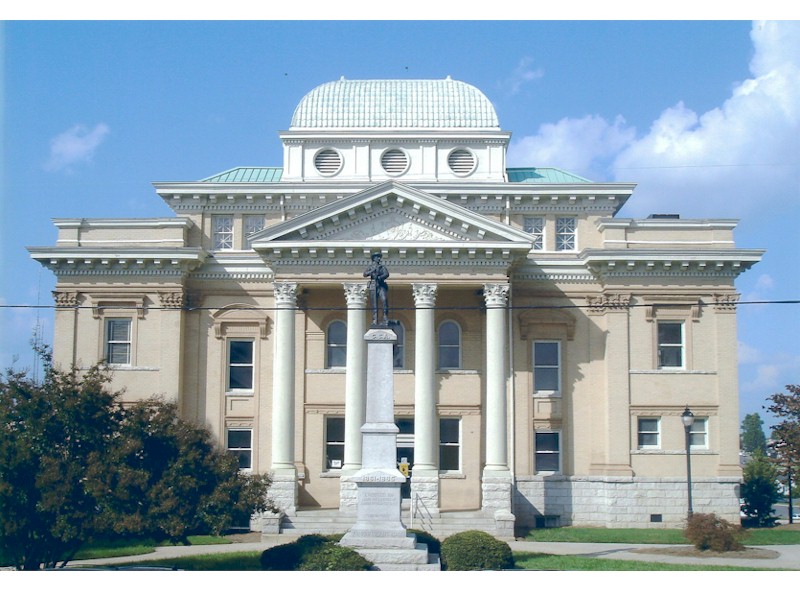
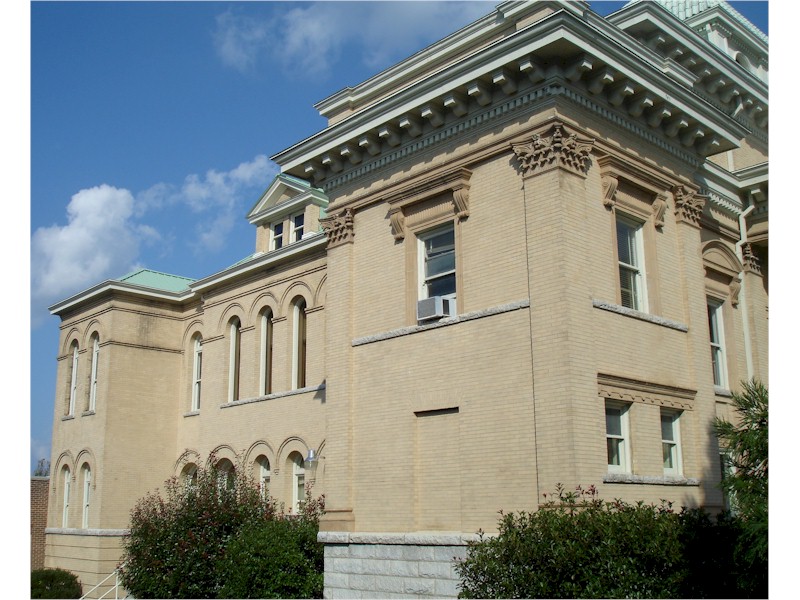
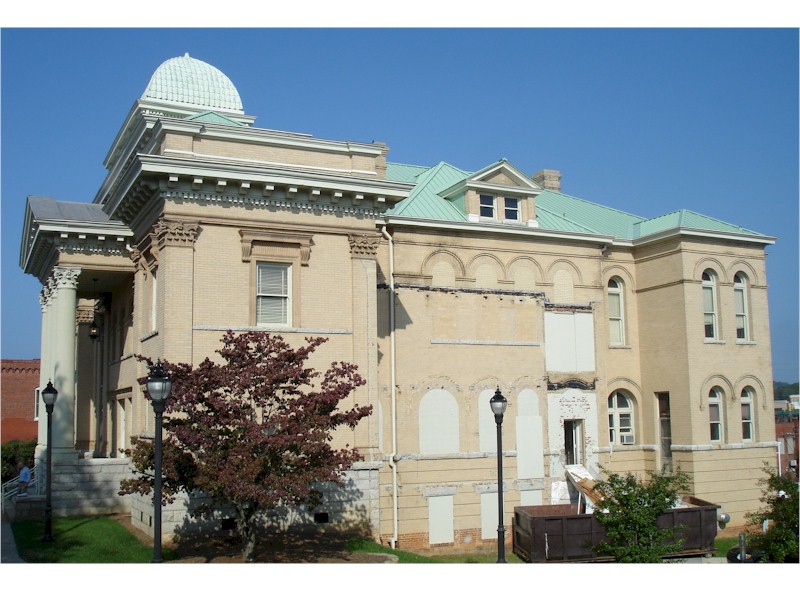
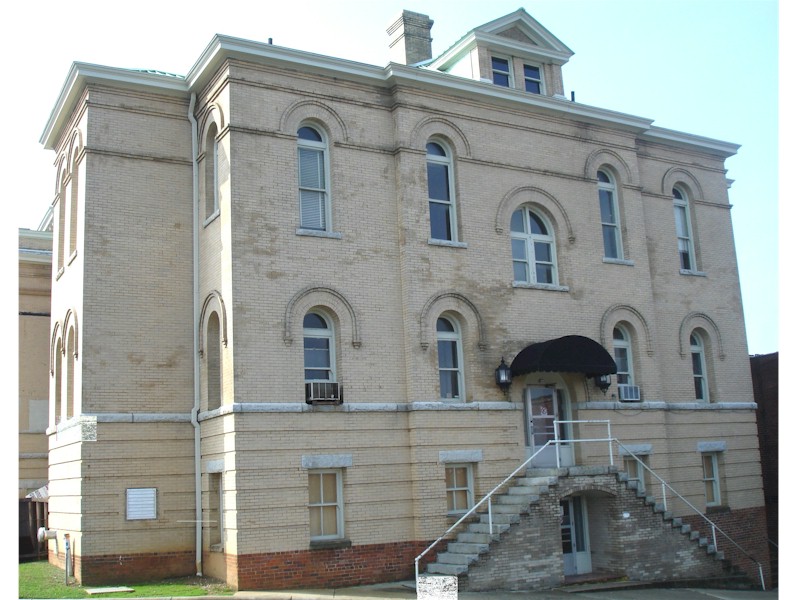
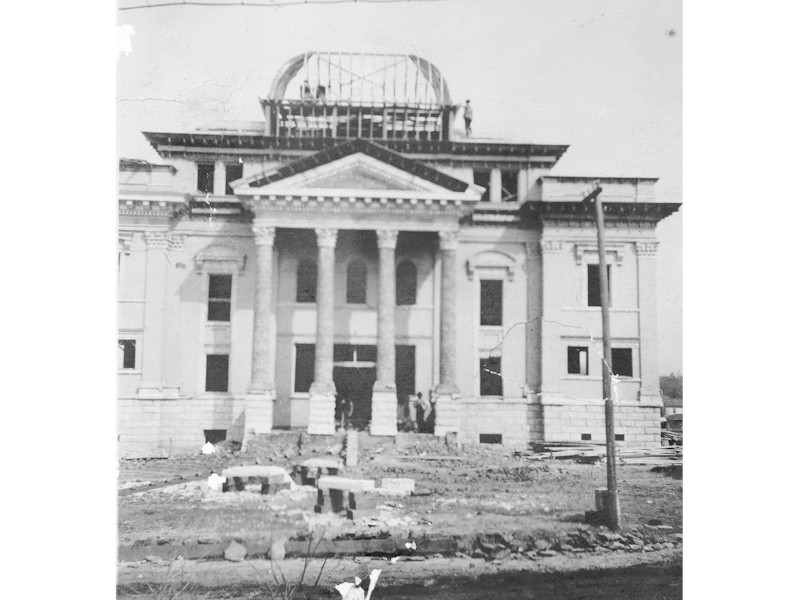
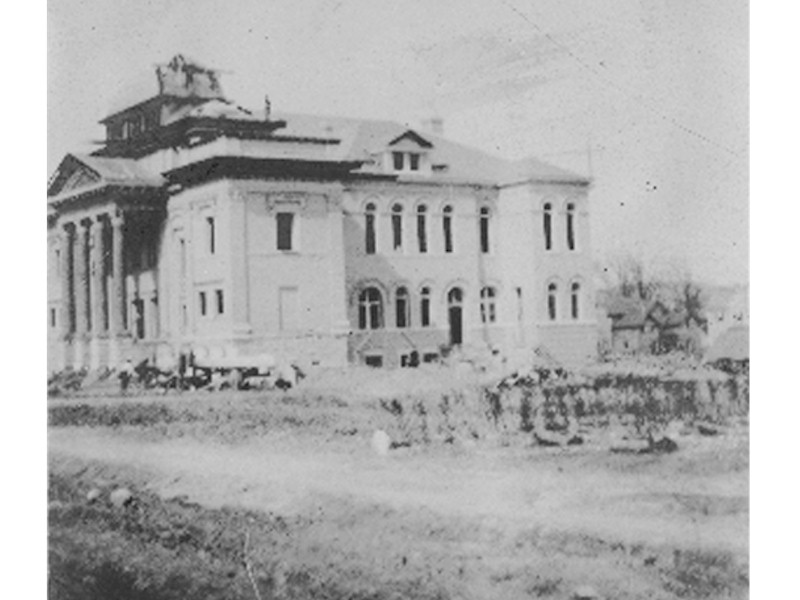
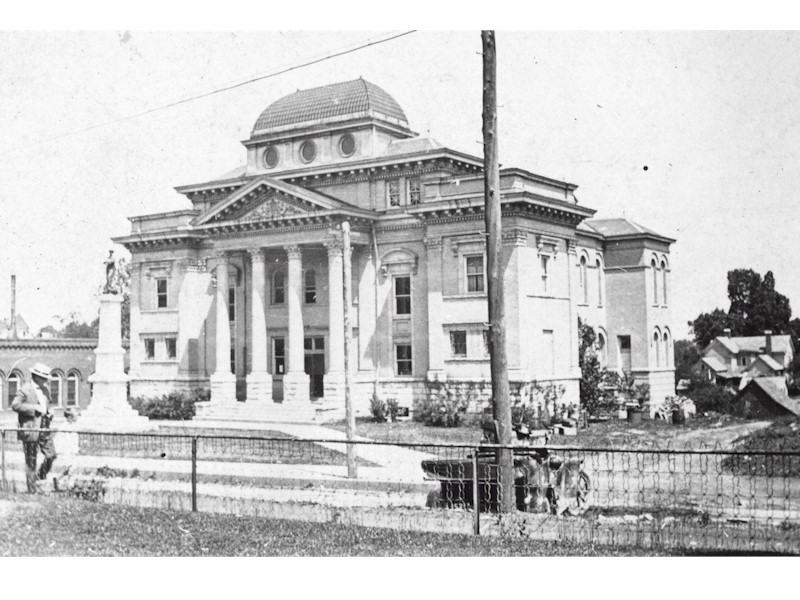
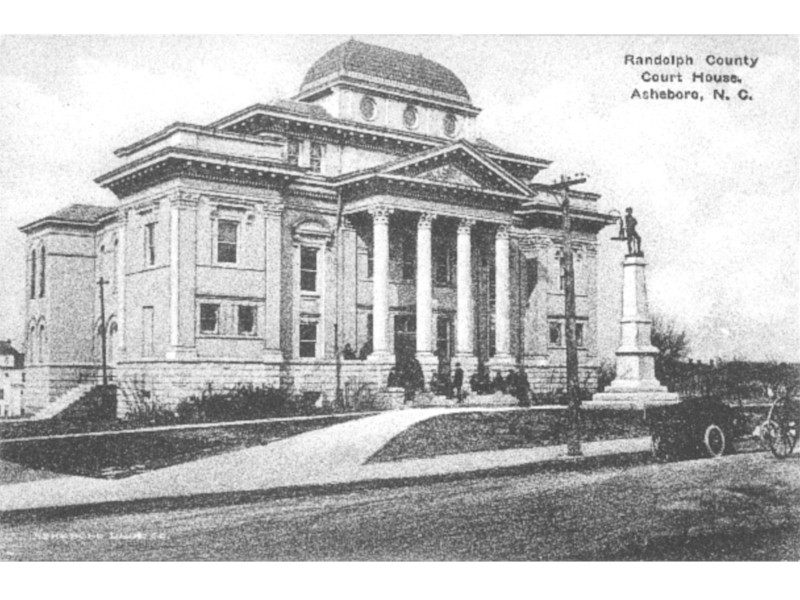
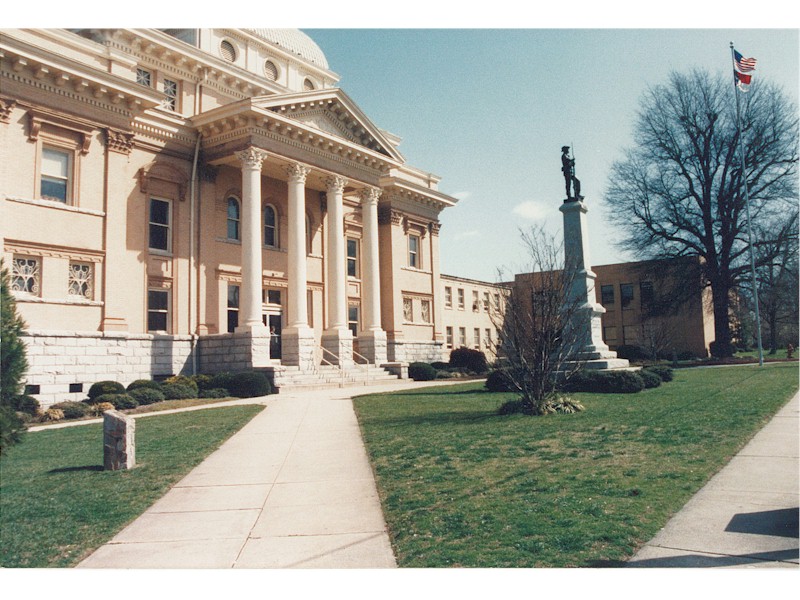
The 1950 annex was demolished during construction of the 2002 courthouse.
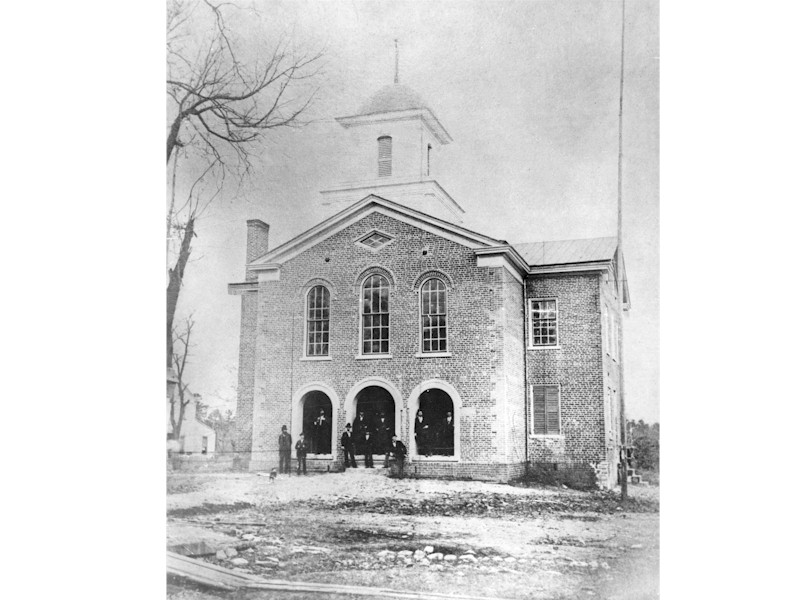
At the original courthouse square, intersection of N. Main and E. Salisbury streets.
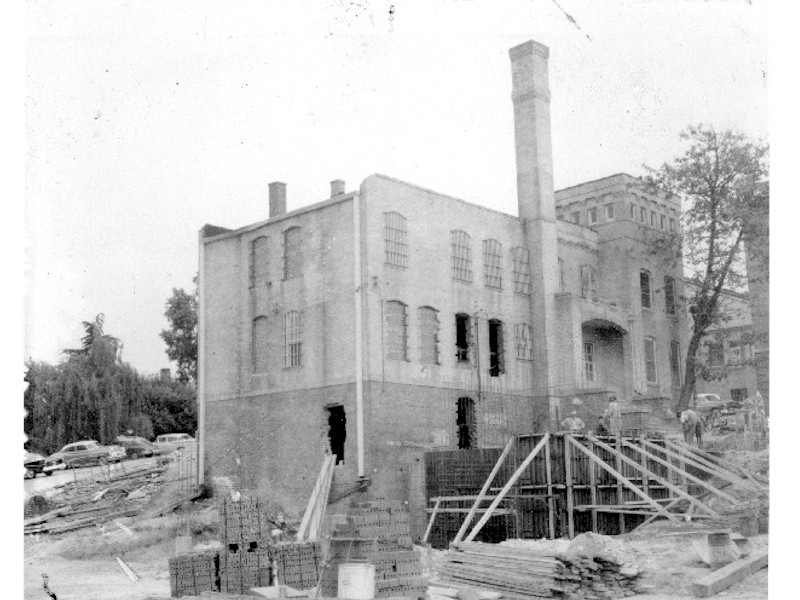
Directly behind 1909 courthouse; demolished for construction of 2002 courthouse. Constructed from bricks salvaged from the demolition in 1914 of the 1839 courthouse.
Read the Landmark Designation Report
Read the Landmark Designation Resolution
At the July 1, 1907, meeting of the Randolph County Board of Commissioners there was a lengthy discussion about the need for a larger, more conveniently located building for the county offices. The commissioners then were meeting in the 6th Randolph County Courthouse, built in 1839 at the intersection of N. Main and E. Salisbury streets, the original courthouse square. The brick structure had been built with leading citizen (and later North Carolina governor) Jonathan Worth serving as construction supervisor, and expanded in 1876, but it had lost its place as the focal point of Asheboro almost 20 years before. With the completion of the High Point, Randleman, Asheboro and Southern Railroad on July 1, 1889, the village had begun a gradual migration of businesses and services from the 1792 courthouse center toward the Sunset Avenue railroad stations.
In 1908, the commissioners acquired property belonging to Col. A.C. McAlister between the original courthouse square and the railroad for construction of a "new, commodious and up-to-date, modern courthouse with fireproof vaults for the protection of the records of the county." The board earlier had purchased plans from the Charlotte architectural firm of Wheeler, Runge and Dickey, which had completed identical or similar courthouses for Iredell, Ashe, Scotland, Stokes, Wilkes and Watauga counties, and afterwards would provide the plans to Avery County. Construction got underway in mid-1908, with the first session of court taking place in the new courthouse on July 19, 1909.
The courthouse design combines the complex, flamboyant massing of 19th century Victorianism with the motifs of American Beaux-Arts classicism. The form of the 1909 building is reminiscent of the "American Foursquare" style of residential architecture -- boxy two-story cubes with hipped roofs. The yellow brick facades of the building rise from a roughly-hewn granite base. Round arched windows on each side define the courtroom on the second level; the windows of the southern (Worth Street) facade feature elaborate molded terra lintels in a variety of shapes and sizes. The complex textures of materials such as tile, rough granite, sandstone, brick wood and metal are combined with bold ornamental shapes to create the active, highly plastic surface of the building.
A new county jail was built behind the courthouse in 1914, using bricks from the 1839 courthouse, which was demolished that year. Annexes were added to the east in 1950 and 1975. In the late 1990s, the jail and the 1950 annex were demolished to make way for a new courthouse on the corner of E. Salisbury and N. Cox streets, which was completed in 2002. The 1909 courthouse was stabilized and secured until it could undergo an interior restoration from 2008-2011. Since the restoration, the upstairs courtroom as served as the meeting room of the Randolph County Board of Commissioners.
Related Sites/Objects:
1838 Courthouse Belfry Bell
Randolph County Corporate Seal
Weights and Measures